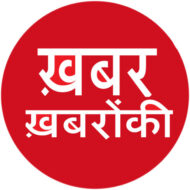
India’s UPI System Emerges as Global Leader in Cross-Border Payments, According to US Treasury Official
Ira Singh
25 Oct’23
In a recent statement by a senior US Treasury official, India’s Unified Payments Interface (UPI) has been hailed as a global leader in cross-border payments, marking a significant milestone for the country’s rapidly evolving financial technology sector.
India’s Unified Payments Interface system (UPI) stands out in advancing bilateral links with other countries, including Singapore and the United Arab Emirates, a US treasury official said.
In a speech at Harvard Law School recently,Jay Shambaugh, Under Secretary of US Treasury for International Affairs, spoke on new technologies and cross-border payments. He said a set of ASEAN countries have the greater ambition of interlinking their fast payment systems multilaterally.Shambaugh said several initiatives are already underway to upgrade legacy payment systems.
He said payment service providers, system operators, banks, and FMIs are investing in operational improvements to make their systems faster, cheaper, more transparent, more accessible, and more efficient for individual or financial sector users.
“For example, institutions around the world are presently at different stages of implementing the ISO 20022 messaging standard. This standard is more data-rich than its precursors and facilitates straight-through payment processing with faster messaging, lower payment failure rates, and other advantages,” Shambaugh added.
Some jurisdictions with strong bilateral economic relationships are going further and interlinking their fast payment systems. India stands out as a jurisdiction advancing bilateral links between its Unified Payments Interface system and those of other countries, including Singapore and the United Arab Emirates, he said.
A set of ASEAN countries have the greater ambition of interlinking fast payment systems multilaterally. In both contexts, the ‘G20 Payments Roadmap’ has channelled efforts toward opportunities for tangible, near-term progress, Shambaugh said.
Shambaugh said in parallel, jurisdictions are also exploring future states of money and payments, including experiments with cross-border CBDCs (Central bank digital currency)and DLT(Distributed ledger technology )based payments.
In an idealised vision, we could use these technologies to design cross-border payment systems with all of the beneficial features of legacy systems, plus some additional features that legacy systems do not provide, he added.
These additional features might include transparency of costs and institutions in the payment chain; atomic, instantaneous settlement; and programmable payments. Together, these functionalities could help achieve our two core goals of increasing efficiency while reducing risk, said the US treasury official.
